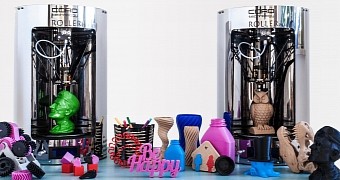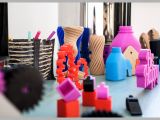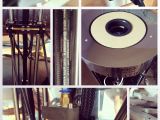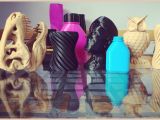Delta robots are something you might be familiar with. A parallel robot made of a base with three arms attached to it, such robots have been used for many things, most recently in 3D printers. 3D printers like the Roller from Coro.
Delta printers are unlike other additive manufacturing machines based on FDM technology (fused deposition modeling). They have three arms holding the extruder nozzle, and the build plate (and by extension build volume) is almost always round / cylindrical.
Such is the case for the Coro Roller Printer, which also happens to possess features that are either just as good or better than on other consumer 3D printers.
True, the price does suffer for it (more on that later), but sacrifices must often be made for success, and the tag is still more affordable than for SLA printers (stereolithography).
The Roller Printer by Coro technology
This additive manufacturing machine uses FDM technology, as we said, which means it builds objects by forcing plastic filament through a superheated extruder.
The filament, dropped through a thin nozzle, builds objects from the ground up (or plate up) over a period of several hours or days. It depends on the size and complexity of the project, as well as whether or not the print job is interrupted for whatever reason.
The newcomer measures 320 x 505 mm / 12.59 x 19.88 inches and weighs 8.8 kilos / 19.40 pounds. The build envelope isn't nearly as large, but still considerable at 180 x 165 mm / 7.08 x 6.49 inches.
The print speed is of 100 mm/s and the minimum layer height is of 0.14 mm, or 140 microns. Not the best in the world, but still good.
Materials that the Roller Printer supports include nylon, rubber, ABS and PLA plastic, as long as they come in filament of 1.75 mm in thickness.
On that note, the nozzle doesn't have to be the same all the time. The standard is of 0.4 mm, but you can also install extruders with 0.3, 0.5, 0.6, and 0.8 mm nozzles.
Marlin firmware runs the Roller 3D Printer, and the LCD screen means you don't need a PC to run it. If you just plug a USB storage device and have a filament container mounted, you can start right away.
Finally, thanks to the use of the BuildTak heated print surface, you don't need to add adhesive tape or otherwise prepare the platform beforehand (lest the object gets jostled out of place mid-print). Just make sure it's clean.
Availability
As we said, this product is not really up for sale. Instead, Coro has launched an Indiegogo crowdfunding campaign whose success (or failure) will determine whether or not you’ll ever see it on the market. The minimum pledge is of $999 / €807 but a fully assembled printer needs you to pay $1,199 / €968.

 14 DAY TRIAL //
14 DAY TRIAL // 



